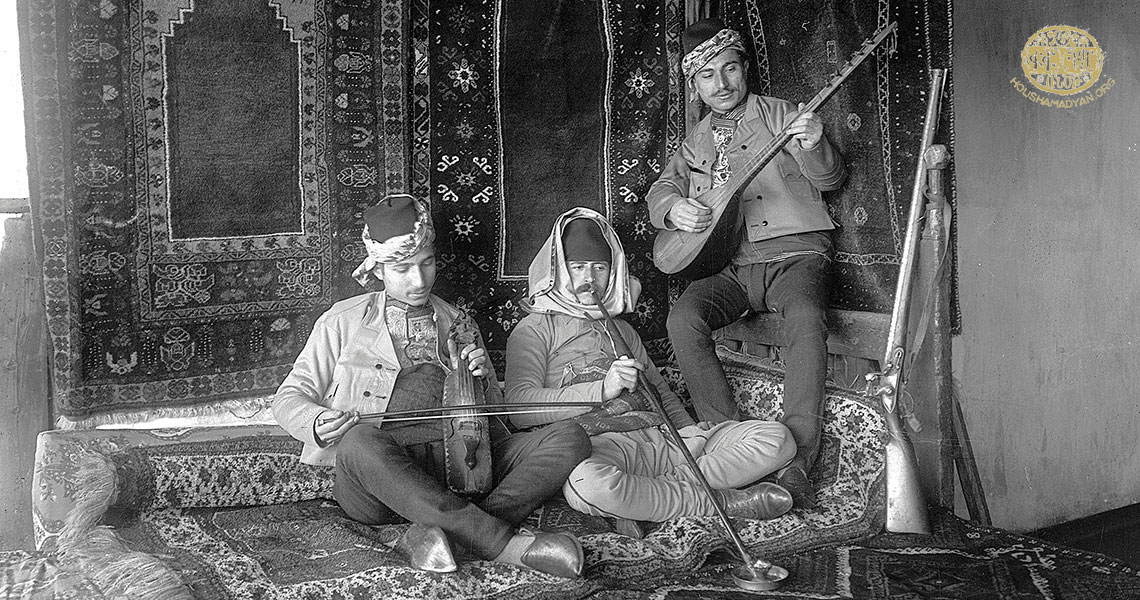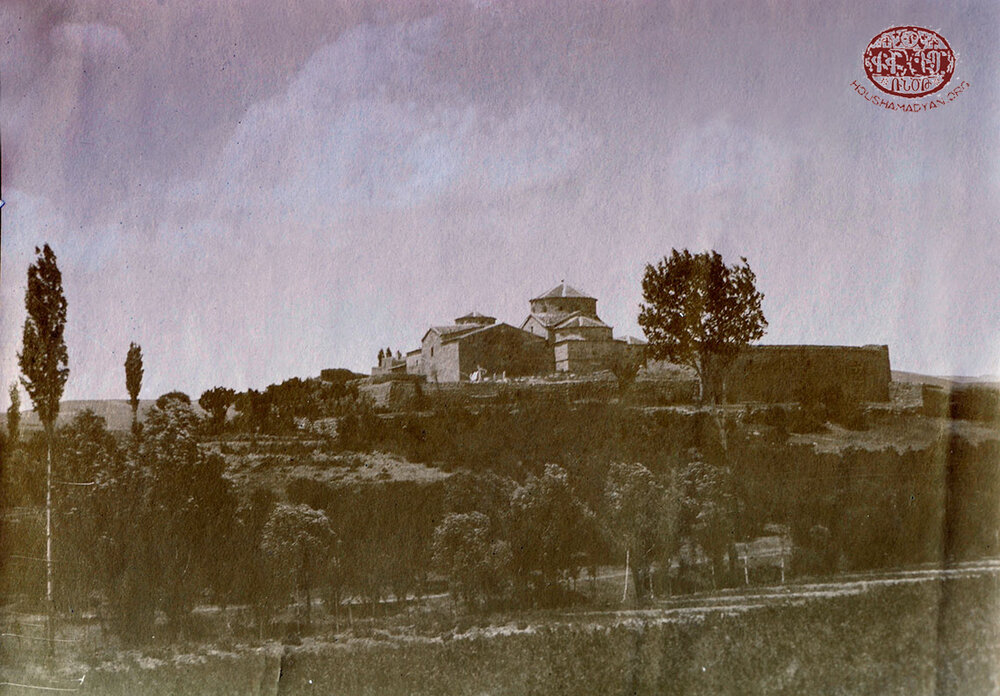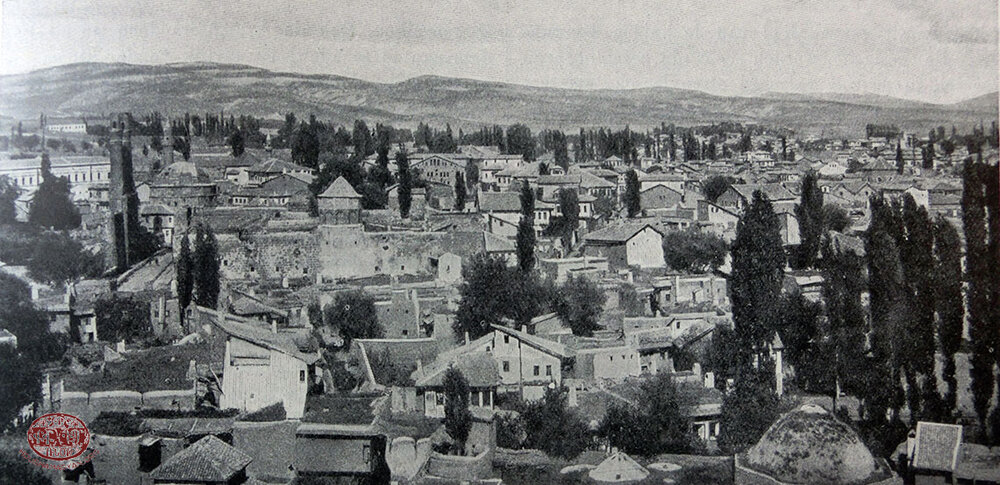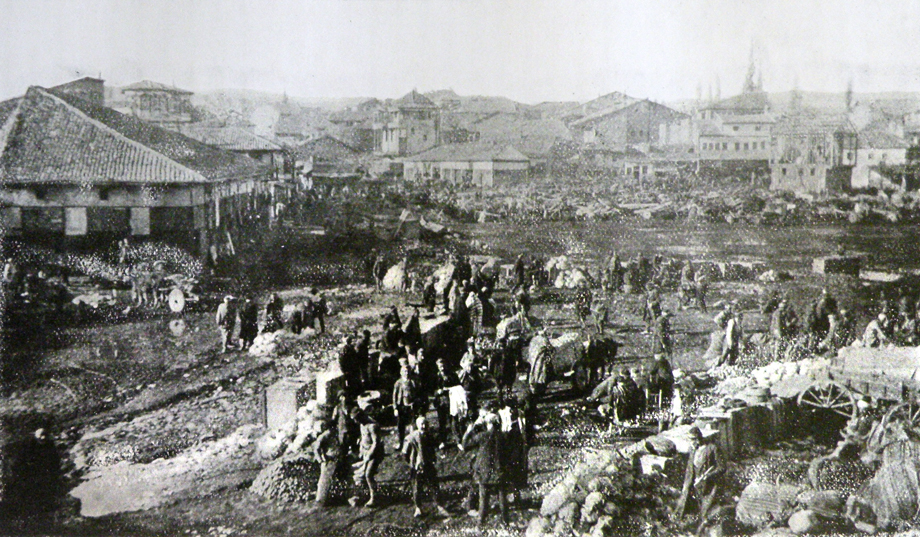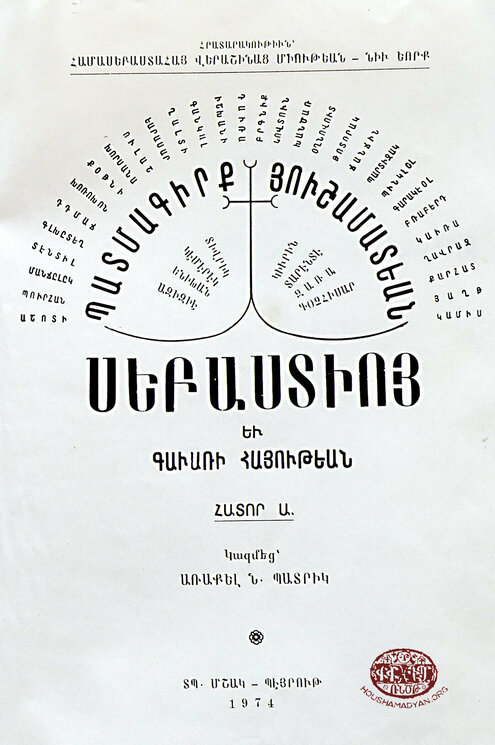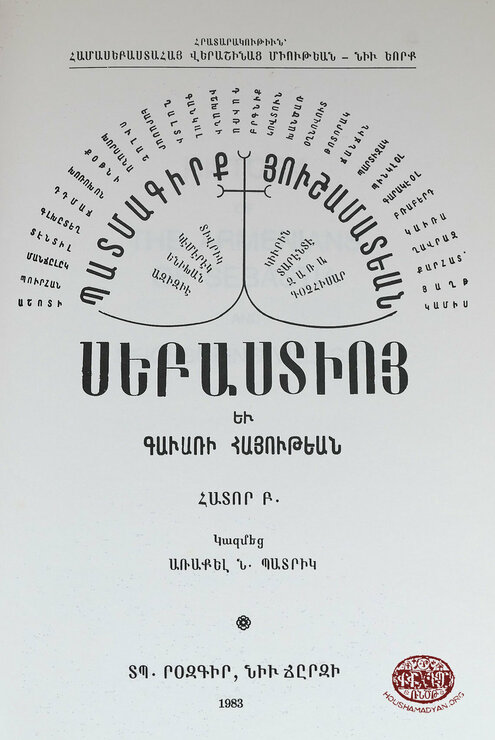Sivas/Sepasdia - Ashough Pesendi
The Last Great Western Armenian Ashough
Author: Harry A. Kezelian III, 23/05/19 (Last modified 23/05/19)

Ashough Pesendi, one of the last professional Armenian ashoughs in Asia Minor, was born in Sivas/Sepasdia in 1864. His birth name was Mardiros Kmpetian; he was the son of Mikayel Kmpetian, who was also a musician. One of his contemporaries, Partogh Indjeian, described first meeting him in the following way:
“This renowned ashough had made a name for himself, not only in the city, but in the entire region, despite his young age.
I myself had the fortune of seeing him in person, when, in the year 1891 he came to Marsevan [Marzvan/Merzifon] to compete with some other ashoughs. He was a likeable young man, well-built, of medium height, with a twisting black mustache, and an intelligent and sparkling look in his eyes.
In the coffeehouse, where the competition was going to take place, hanging his muamme (riddle) on the wall, he called to the arena a few other ashoughs, who had more or less gained some fame.
The ashoughs could not solve it, wherefore he won. The muamme was ‘makok’ (weaver’s shuttle).” [1]
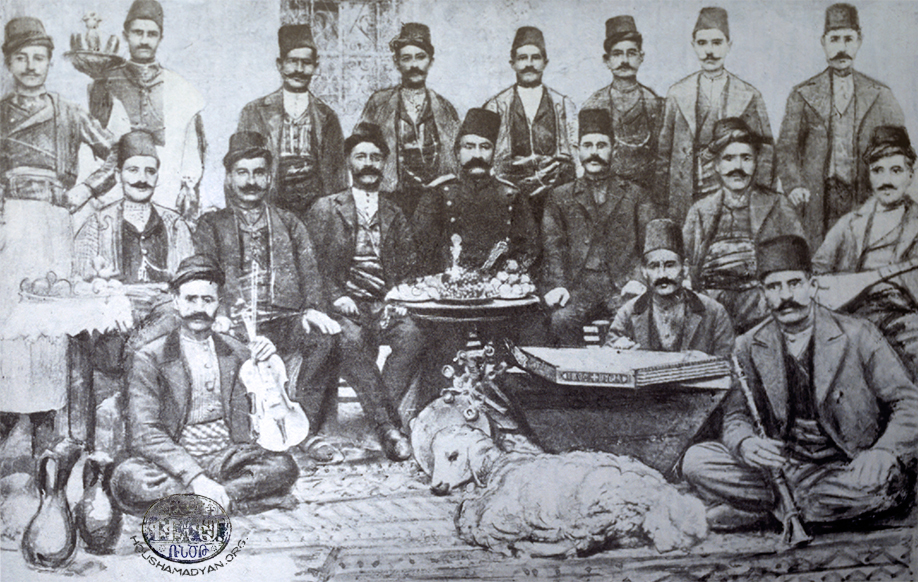
Eghin Havasi (Song)

Egin Gelin Getirmek Gaydasi (Song)

Pesendi related to Indjeian how he had become an ashough:
“I was 16-17 years old. My father played the kemani. I had a great love to be an ashough. One day they said that ashoughs had come to the Soulou Khahve, and had hung a ‘muamme.’ I went a few times to pay attention and I left. I gave my love to ashoughoutiun but the problem was, how would I learn. I, who had heard from our ‘mamigs’ that our historic Sourp Nshan monastery gives the ‘mouraz’ (wish) to the one who desires and believes with his heart, decided to go to the monastery and ask for my ‘mouraz.’
I had a school friend named Vosgian, who played the kemani; he too, like me, desired ashoughoutiun.
One day we decided to go with our parents to Sourp Nshan Monastery and to request from the primate, Bedros Srpazan, that he put a room in the monastery at our disposal, so that in accordance with our wish we could stay for a vow of 30 days. The primate, blessing us, gave us a room. Our parents saw to our expenses.
Three times a day we would kneel in front of the altar in the chapel and pray, saying ‘Sourp Nshan, give us our desire.’ Barely 10-15 days later, my friend, getting bored went home, but I remained a full month, without losing hope or getting bored, and I continued my prayer. One day at night, when I was sleeping in my bed, a bearded man, with a vibrant face, stood next to me and took hold of my arm. He had a kemani in his hand, he gave it to me and said that my vow had been accepted. I suddenly woke up; there was no one there and no kemani either. As soon as the dawn broke I went to the chapel, I kneeled before the altar. When the primate came, I told him my dream. He blessed me and said, ‘Go, my child, I wish you success, and continue your practicing, so that your wish may be fulfilled.’ I kissed the primate’s hand and returned home. I told my parents my dream; they greatly rejoiced.
I continued my study of the Turkish language, because all the songs in competitions were in Turkish.” [2]
In Arakel Badrig’s book, though it is not completely plain, a distinction seems to be made between “keman” or Western violin often played in Middle Eastern style, and “kemani”. The instrument “kemani” was known in Sepasdia from other sources, since one of the famous musicians of the city who would play at weddings and community events was Yeranos Herdemian, or Kemanidji Herdem. He played at times with the oud player Hadji Boghig and at times with the saz player known only as Garo. The following quatrain describes the playing of Herdem and Garo, popular with the people:
Հերտեմին չալած քէմանին,
Կակուղ, թեթեւ սեւ եէմէնին,
Կամ Կարօին չալած սազը,
Վաղւէն բաղնէց դեղին թասը: [3]
The kemani that Herdem plays
A soft, light, black yemeni
Or the saz that Garo plays
The yellow bowl of tomorrow’s bath.
The instrument “kemani” (called in Armenia today “kamani”) is similar or identical to the instrument used in Greek folk music called “Cappadocian kemanes” and indeed in Sivas we are not far from the Cappadocian Greek communities. The first picture of this article shows two men from Tokat playing saz and kemani, just as Herdem and Garo did in nearby Sivas.
After making his pilgrimage to Sourp Nshan, Ashough Pesendi became a student of the Turk ashough Zileli Djeihoun/Ceyhun, along with several other Armenian ashoughs named in Turkish sources: Ashik/Aşık İzani, Zileli Shermi/Şermi and Zileli Mevdji/Mevci. [4] But Pesendi soon gained a name as perhaps the most popular ashough in Sivas, Turkish or Armenian, as seen from the following story, one of the most famous episodes in his life, which has also been quoted from Partogh Indjeian:
“The Soulou-Khahve [The “Water” Coffeehouse] of Sepasdia was known to all, because in those days the ashoughs would congregate there.
One day the news arose that three ashoughs had come to the Soulou-Khahve, to compete with Ashough Pesendi on the following day. I, Injeian, being interested, went to listen to the competition. I entered the Soulou-Khahve, I saw three ashoughs seated cross-legged on the stage, their sazes in their hands. One was Persian, the other a Turk from Kars, and the third, from Yozgat, and also a Turk. They were waiting for Pesendi. Present were many Turks, Armenian merchants, government officials. The ashoughs agreed among themselves that Pesendi would prepare the muamme (riddle). The riddle board was hung on the wall, coated with beeswax. The person who entered would give a gift to the coffeehouse-owner, and he would stick it to the board. They stuck many a medjid, and all the way up to a half lira.
The answer to the riddle was sealed in an envelope, and after locking it in a box that the coffeehouse-owner had, the box was also sealed. A time period of seven days was give to solve the riddle. On the appointed day our Ashough Pesendi came, with a smiling face, the kemani that never parted from him in his hand, and took his place across from the other ashoughs.
The riddle, which was written on a piece of paper and hung from the wall, was the following:
[In Turkish]
Bir acayib nesne gördüm;
Dokuzu bir sırada,
Dokuzında dokuz can var,
Her biri bir sefada.
[English Translation]
I saw a strange thing
Nine in one line
In the nine were nine souls
Every one of them in their comfort
The ashoughs began to play. Each one in turn began to sing the interpretation he had found for the riddle. Pesendi himself playing, answered everyone in song, refuting the explanation that each one gave.
This competition continued for seven days. The stipulation was that it would end before the midday namaz (call to prayer).
A murmur arose, that the competing ashoughs had found the secret of the riddle and at just the last minute they would answer.
To tell the truth, both Armenians and Turks became sad, that the troubadour of Sepasdia would lose at the last moment. If there was anyone rejoicing, it was Mihr Ali Bey, who for the last two days had come and encouraged especially the ashough from Kars, his compatriot, and at every visit gave him another gift.
The time was completed. The very same Turkish official, who was present the whole time, getting to his feet, said that after the time had been completed another hour would be given. Turning to Ashough Pesendi, he said: ‘I say to you, Ashough Pesendi, if these ashoughs have discovered your secret, be pleased, by the ashough law, to place your fiddle before them; but if you have won, they must place their sazes before you.’
Ashough Pesendi stood up and said:
‘Teşekkür ederim beyim, bu kemani de benim, muamme de benim’ (Thank you, my lord, this fiddle is mine, and the riddle is mine).
The three ashoughs took their sazes in their hands and said:
‘We searched the heavens and the earth, the seas and the forests, but we confess, that we did not find it. Ashough Pesendi is our master.’
Saying that, they gave their sazes to the Sepasdatsi ashough.
The coffeehouse-owner opened the sndoog, took out the box, examined the seals, and everything was in its place. He undid the parcel, the secret was the following:
At that time, there was a wooden bridge over the Moundar River. The river passed below the tannery and beside the knife-maker’s shop. There, nine toilets (djemish) were built in a row; in each of the nine a single man would sit and answer nature’s call…. Pesendi was trying to say that ‘I saw a surprising thing; nine things in a row, in the nine things, nine people seated, relieving themselves.’
The accursed Mihr Ali got to his feet as soon as he heard this and in anger said: ‘Khınzır gâvur, nerden buldun bu sırı!? [Infidel bastard, where did you come up with this riddle!?]’ But Pesendi nobly returned the ashoughs’ sazes to them, and also, all the money that had been given, more than ten liras, which belonged to him; and paying the travel expenses of the three defeated ashoughs, he wished them bon voyage.” [5]
As we have seen, Pesendi was greatly appreciated by the people of Sivas, Turk and Armenian alike, and lived up to his ashough name, which comes from the root “pesend,” meaning in Ottoman Turkish, “approved.” Pesendi married Baydzar Kurkdjian in 1894 and moved to Istanbul. He even performed in the presence of Sultan Abdul Hamid, though he had to remain behind a screen. When the Hamidian massacres took place against the Armenians, high ranking Ottoman official Kel Hasan Pasha warned Pesendi that his life was in danger, and advised him to leave the country.
Pesendi immigrated to Russia and lived in various places including Kerch (East of Crimea), Batum, Yerevan, and Echmiadzin; he made a living there as a baker and a coffeehouse owner. Probably he ran a coffeehouse featuring ashough music including his own performances. We can even imagine that he may have met with the famed ashoughs Djivani and Sheram, who were also active at this time in Russian Armenia. At the time of the 1895 massacres, he wanted to let his friends in America know what had happened. But he felt that he couldn’t write anything openly, so he explained it in poetry, writing the following to make it clear as to who had been responsible for the massacres:
“The catastrophe came and went; who is to blame - we don’t know, and my kemani also was saved; you are far from me, but I will sing that you may hear; it is possible that we won’t see each other again, this song of mine is a testament for you.
Վարդը բացատրելու պէտք չկայ
Ծաղիկ մըն է, մենք գիտենք
Շունը բացատրելու պէտք չկայ
-Գամփռ մըն է, մենք գիտենք” [6]
[“There is no need to explain the rose – it is a flower, we know; there is no need to explain the dog – it is a mastiff, we know.” Meaning that the “dog” who committed such a crime was the largest of all villains.]
While Pesendi was living in the Russian Empire, his wife Baydzar gave birth to their son, Ardashes Kmpetian, who was born around 1900 in Alexandropol (Gyumri). Ardashes later became well known as an actor in the Armenian theatre performances of Paris.
Pesendi moved to Bulgaria in 1905 and lived in Ruschuk and Varna. After the Constitution of 1908 was announced, he, like many other Armenians, gained hope and returned to the Ottoman Empire. We are informed of two concerts he gave at this time, in his hometown of Sivas. The first was on October 5, 1909, and organized by the local Hnchag party members. This concert was a benefit for the Tailoring Workshop for Women which the party had newly opened in Sivas. In addition to recitations, songs, and speeches, including a song by Pesendi’s young son Ardashes, the concert itself consisted of pieces played by Ashough Pesendi, in this instance playing saz, together with the aforementioned Herdem, playing the kemani. The newspaper reported that as famous as Pesendi was, Herdem’s playing was even more famous! [7] Following that, Pesendi himself organized a concert of the ashoughs of Sivas, both Armenian and Turk, which was held on November 15, 1909. Pesendi returned to Istanbul in 1910 and made a living from his poetry, publishing in that year his divan (collection) of both Turkish-language and Armenian-language ashough poetry. His book was called Գուսանի Տաւիղը(the Minstrel’s Harp), and it included 45 Armenian songs and 27 Turkish songs. [8]
Ashough Pesendi wrote his songs in Turkish and Armenian according to Middle Eastern rules of ashough poetry, which were also followed by Sayat-Nova and the other famed Armenian ashoughs. Poems were written in the forms known as “gazel”, “divan”, “koshma”, “semayi”, etc. Unfortunately, it was not possible to find an example of his Armenian poems, but the following two poems in Turkish were found in Arakel Badrig’s “Badmakirk,” the second one being a political statement on the condition of the Armenians.
Ey gönül, fani dünyadan göçmeye şüpen mi var?
Şol felegin neft dolusun içmeye şüpen mi var?
Erzahil göksüne çökse bülbül dilin nal olur
Gözlerinden kanlı yaşlar dökmeye şüpen mi var?
Oh heart, do you have a doubt that you’ll leave this transitory world?
Do you have a doubt that you’ll drink the full glass of naphtha of evil fate?
If Azrael descends on your chest your nightingale voice will be silenced
Do you have a doubt that bloody tears will flow from your eyes?
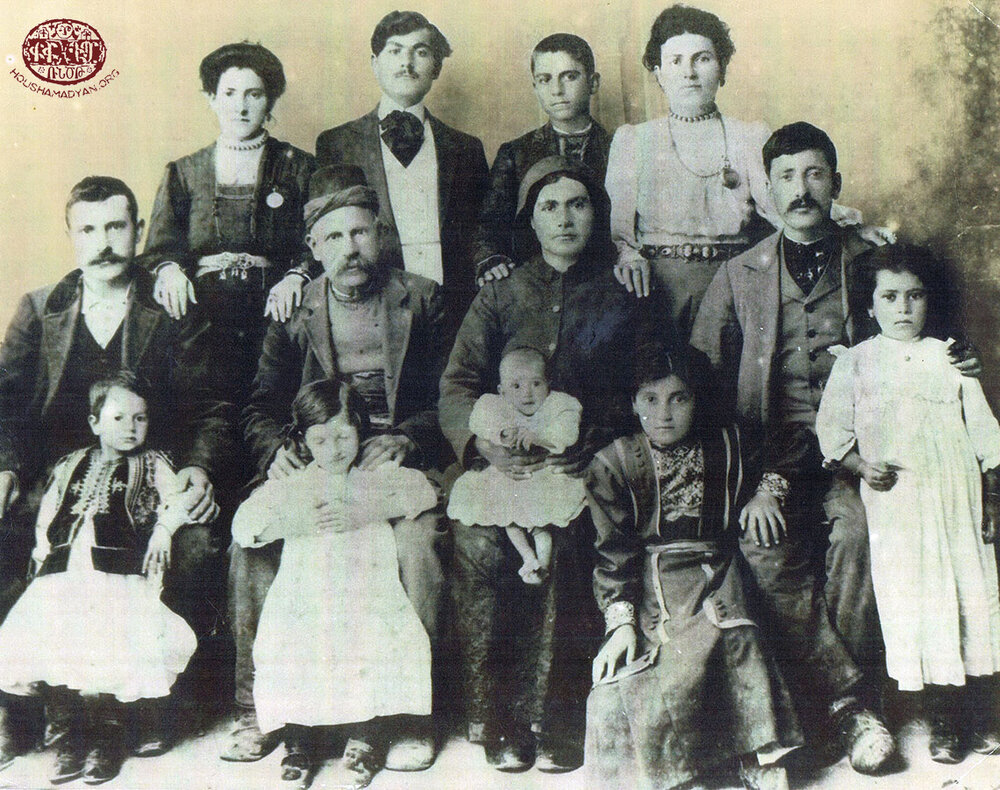
Bu khalkın mülküni seyr et;
Kharab abad lazımsa,
Bu mülkün khalkını söylet;
Sana feryat lazımsa.
Pesendi’s translation [The English translation based on Pesendi's Armenian translation]:
Gaze at the land of this people
If you have need of ruins
Make the people of this land speak
If you have need of lament/cry? [9]
Ashough Pesendi has left us with something even more valuable; the only known sound recordings of a Western Armenian professional ashough. These recordings were most likely made in Constantinople in 1913. We do not have information on how, when, or where Pesendi died, this recording is the last trace of him.
Though Pesendi was from Sepasdia/Sivas, these two songs originate in Agn (Eğin/Kemaliye), famed center of Western Armenian folk music and ballads, where some believe the song “Groong” itself originated, as well as the famous genre called “Andouni.”
The song Pesendi has recorded in Turkish is titled as “Egin Havasi - Mani” (Melody of Egin/Mani), though it is not at all the same as the more famous piece usually known as “Egin Havasi,” which was recorded in Armenian and Turkish by Udi Hrant and others. Instead, Pesendi’s recording is a genre of song which is usually referred to elsewhere as “maya.” Sometimes the terms “maya” and “mani” were interchangeable, and this is probably why Pesendi called his song a “mani.”
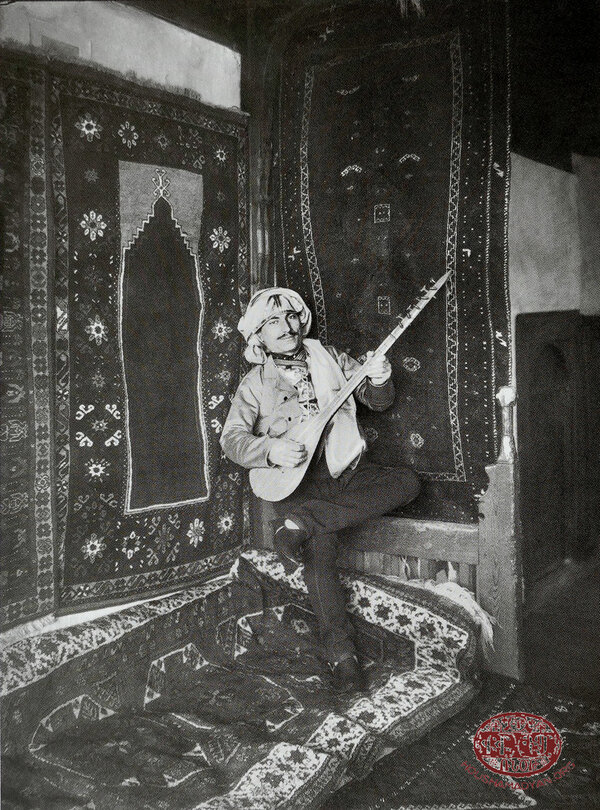
Early Armenian musicians in America, particularly from the Kharpert/Harput region, recorded what could be considered the same song or melody as Pesendi’s, but with different words. These were usually titled as “Harput Mayasi” (Maya of Kharpert). The structure of the song includes an instrumental repetitive melody in the famous 10/8 rhythm common in the Armenian Highlands, in this case stopping to allow the vocalist to chant the lyrics of the song in a free-rhythm manner. When he is done with the first verse, the music picks up again and the song continues alternating in this way. In Pesendi’s recording, some of the instrumental parts at the end of the song are also in a 4/4 meter. As far as we know, there were numerous poems or verses, always in Turkish, that could be sung to what is essentially the same melody. Though one can clearly hear Pesendi beginning with the cry “Yavri, Yavri,” and also “Yandi Djanim,” it was not possible to decipher all of the words. Essentially these are emotional songs expressing love or other feelings coming from the people of the provinces. Although the mayas are usually sung in Turkish, it seems that the influence of the Kurdish style of singing is felt in the staccato recitation of the beginning of the verses. That is probably why these types of songs are known in the East, rather than in Central Anatolia or Cilicia, let alone Istanbul.
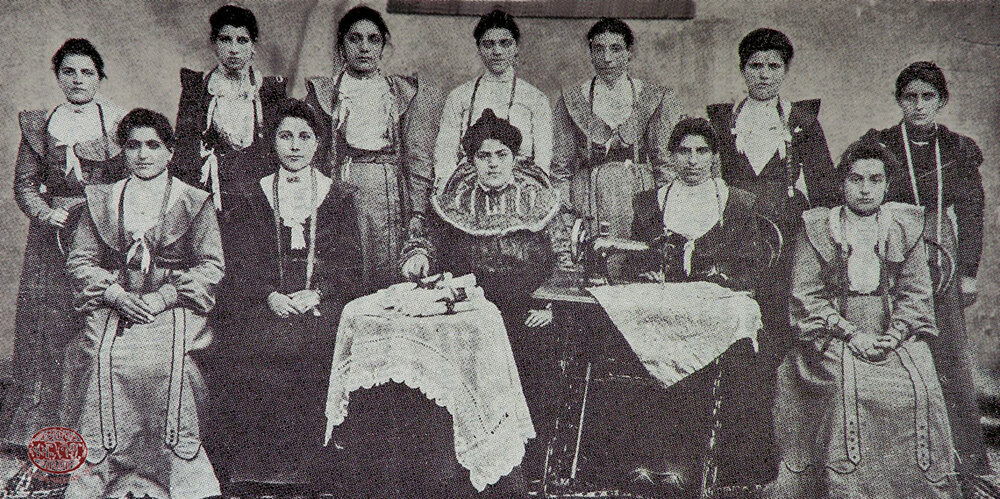
The beginning of Pesendi’s first verse is strikingly similar to the notation by Gomidas Vartabed of the “Andouni” song from Agn (“Aghvor mi dzarvoutenen…”), which he collected in “Shar Agna Yerkerou,” and which was most likely sung to him by the Agntsi ethnographer Hovsep Djanigian. [This should certainly not be confused with the famous and often-performed piece by Gomidas also known as “Andouni” (“Sirds nman e…”), which is for the most part his own composition.] So, it would seem possible that the Andouni songs of Agn were sung in a similar way to Pesendi’s “Egin Havasi.” However, the collection of Andouni melodies by Avedis Mesouments, made in France, bears no resemblance to the “maya” song, and in fact Mesouments records the maya/mani as an entirely different piece. In addition, Gomidas also transcribed a second variation of the Andouni song in his Agn collection, which is also different. To clear up the confusion of these songs, a serious study needs to be done of the folk music of the Western Armenians, which unfortunately, due to the assumption that all Armenian folk music should be the same, has not yet been undertaken.
Pesendi’s Armenian song, given the Turkish name “Egin Gelin Getirmek Gaydasi” or “the Egin Gayda (Bagpipe) of Bringing Forward the Bride” is known from other sources, such as Hovsep Djanigian’s “Hnoutiunk Agna.” [10] This is a bit confusing as there is no bagpipe in the piece, neither do any of the books on Agn tells us that the bagpipes were played there. Whatever may be the meaning of “gayda” in musical terminology, nevertheless, Djanigian attests that this song is sung in Agn at the moment the bride and groom, returning from the church ceremony, arrive at the door of the groom’s family home. Pesendi sings a few of the many verses to this song. The song is usually referred to in Armenian as “Pari Louys, Aghvor, Pari Louys,” (Good Morning, Beautiful One, Good Morning), which are usually the first lines of the song, because as Djanigian tells us, by the time the couple returns to the door of the groom’s house, it is usually dawn. The following are the words sung by Ashough Pesendi in the recording:
Բարի լուսուն բարին վրադ
Բարի լուսուն բարին վրադ
Ուր [որ] ցաթէ արեւն ի վրադ
Ուր ցաթէ արեւն ի վրա
Հարսն ի պաղչան վարդ կու քաղէ
Հարսն ի պաղչան վարդ կու քաղէ
Նստեր ու շէքէր կու մաղէ
Նստեր ու շէքէր կու մաղէ
Շէքրին թոզն ալ ինք կու թաղէ
Շէքրին թոզն ալ ինք կու թաղէ
Քալէ՛ ու մանտրտիկ քալէ՛
Քալէ՛ ու մանտրտիկ քալէ՛
Վրայ խալուն վրայ քալէ՛
Վրայ խալուն վրայ քալէ՛
May the goodness of a Good-Morning be upon you
So that the sun may shine upon you
The bride picks roses in the garden
She sits and sifts sugar
And she buries herself in the sugar-dust
Walk, and walk daintily
Walk upon the rug!
In the performance of “Egin Havasi”, Pesendi appears to be accompanying himself on the violin, and in the Armenian song, he appears to use the “kemani.” Perhaps he wanted to use a more traditional instrument to present this very traditional Armenian wedding song as authentically as possible. Again, Djanigian is a source of some of the oldest material on Armenian wedding traditions and carefully noted the songs that were traditionally sung at each stage in the wedding, aside from the church ceremony which was well known by the clergy. Djanigian includes many verses to the wedding songs and “Pari Louys Aghvor” is no exception, however Pesendi only sings a few of these verses to give us an idea of the song. It is also worth noting that Pesendi’s song is played in 9/8 time, which was and is commonly used in Anatolia at times of welcoming or arriving (in this case, the arrival at the groom’s house), for which reason it is called in Turkish “karşılama” (welcome). It is used by the Eastern Armenian ashoughs in the same way, for example, by Ashough Djivani in the story of Ashough-Gharib, it is used at different points in the story where, for example, Ashough-Gharib arrives at a new city. This rhythm is also used by the Anatolian Greeks as a “solo dance” for two people dancing across from each other, which is another meaning of “karşılama.” Finally, the same rhythm is used in the Armenian folk dance Tamzara, though there seems to be no connection from that dance to the word karşılama. At any rate, we can see from all of this that Pesendi was not only schooled in the musical styles of the ashoughs, but also an expert of Armenian and Anatolian folk music.
In conclusion, the small information we have about Pesendi’s life and work, and the tantalizingly small amount of recorded music we have from him, are of much greater importance than they seem. Through this data, we have a link to a past which for the most part has been severed. Though folk and classical genres of Western Armenian music survived in different parts of the diaspora, the ashough music of the Western Armenians is so little known that most people assume all ashoughs were from Eastern Armenia. Pesendi, the great ashough of Sivas, and the last traditional Western Armenian ashough, gives us, especially through his sound recording, a link to what musical life was actually like for Armenians before the catastrophe of 1915.

- Recording of “Egin Havasi” and “Egin Gelin Getirmek Gaydasi” courtesy of Ara Dinkjian
- Clean-up of recordings done by Harry A. Kezelian III
[1] Arakel Badrig, Պատմագիրք յուշամատեան Սեբաստիոյ եւ գաւառի հայութեան [History of the Armenians of Sepasdia/Sivas and neighboring villages], Vol. 2, New Jersey, 1983, p. 106.
[2] Ibid, pp. 106-107.
[3] S.M. Dzotsigian, Արեւմտահայ Աշխարհ [Western Armenian World], New York, 1947, p. 639.
[4] (author unknown) Türk Halk Edebiyatında Ermeni Saz Şairleri [quotations accessed online]
[5] Badrig, History of the Armenians of Sepasdia/Sivas, pp. 106-109.
[6] Ibid, p. 109.
[7] Երիտասարդ Հայաստան [Eridasart Hayasdan], weekly, vol. 7, no. 27. Jan. 26, 1910, New York, p. 107.
[8] Türk Halk Edebiyatında Ermeni Saz Şairleri.
[9] Badrig, pp. 109-110.
[10] Hovsep K. Djanigian, Հնութիւնք Ակնայ [Agn Relics], Tbilisi, M. D. Rotiniants Press, 1895.
